26 Sep For Me, BART’s Worst-Case Scenario Feels a Little Too Familiar

A BART train passes by a rainbow and through El Cerrito, from where the author can now catch an estimated 10 trains per hour, though that could drastically change if funding needs aren’t met. (“Under the Rainbow” by TJ Gehling via Flickr / CC BY-NC-ND 2.0 license)
Commentary, Samantha Kennedy
At the beginning of Transit Month, a short-term deal to save Bay Area public transit was seemingly on the verge of falling through. BART is facing an up to $400 million future deficit; AC Transit, $35 million; and Muni, $322 million, but Gov. Gavin Newsom made the right call. And it’s a call we should make as voters.
As someone who has had to rely on public transit across the Central Valley and parts of the Sierra Nevada foothills, having Bay Area public transit — as unreliable and hectic as it can be — is necessary. I’m grateful for it.
BART’s Orange and Red lines, in particular, give me about 10 trains per hour to choose from to get from the East Bay all the way to San Francisco for work, school, seeing friends, getting care for my cat, and anything else I might need or want to do.
My trip to school takes about an hour, with one or two transfers, from El Cerrito to San Francisco State. Shortly before I settled on attending SFSU, I considered attending UC Merced to stay closer to my mom. That trip from my mom’s house near Yosemite, which is a little over an hour driving, is almost three hours on public transit.
Though the schedule depends on which season it is, the bus in her area usually comes a total of four times per day.
For someone like my mom, who can drive — and would choose to any chance she got — the lack of bus service is still a problem. My mom often opts to use dial-a-ride services because her physical and mental disabilities make it hard for her to drive alone. This week, she had to leave home at around 3 in the morning to get to an 8:30 a.m. appointment only an hour away.
And when those services aren’t available and nobody else can give her a ride, she relies on the bus. Sometimes, because the last bus is usually around 5 p.m. and her appointments don’t end on time, she’ll end up stranded with no way to get home until we can get someone to her.
That’s not something I see happening in the Bay Area. I can get to a doctor’s office within an hour and not have to worry I might be stuck in a different city for an entire night.
That doesn’t mean there are never going to be problems.
BART this month saw yet another issue that caused systemwide disruptions to service, shutting down trains for hours and costing the agency $200,000 in revenue.
That’s in addition to safety and cleanliness concerns that riders — and traditional and social media — sometimes cite as reasons for quitting or avoiding public transit altogether.
The agency attributes the ridership decline largely to the effects of the COVID pandemic, including the shift to remote work, for its budget deficit.
The deal between Newsom and lawmakers will help BART, Muni, AC Transit, and other local transit agencies stave off severe budget cuts until November 2026. That’s when a ballot measure is planned to go before voters that would further help fund the public transit agencies.
Without any help, BART said some of its worst-case scenarios could include shutting down two of the five lines, closing stations, and ending weekend service.
One of those two potentially cut lines could be the Red line, connecting Richmond with San Francisco. That would mean that even people who don’t take public transit would be forced to share the road with more drivers because fewer transit services would be available.
Drivers in the region already have some of the worst commutes in the country. Commutes in the areas of Vallejo, San Jose, Sunnyvale, and Santa Clara are among the worst 10, according to a 2024 study.
Saving and continuing to fund public transit isn’t just good policy; it’s a win for everyone, especially those of us who depend on it.
Here are a few Transit Month events to close out the month:
- On Saturday, Sept. 27, a group will participate in a San Francisco-wide hide-and-seek game on public transit.
- Also on Saturday, Sept. 27, the Transbay Coalition will conduct a “Rosie Ride” from SF to Richmond on the ferry to the Rosie the Riveter WWII Home Front National Historical Park.
- On Tuesday, Sept. 30, the Muni Diaries podcast and KALW will wrap up Transit Month with a feature of the short film “Stop Request” and a Q&A.





No Comments